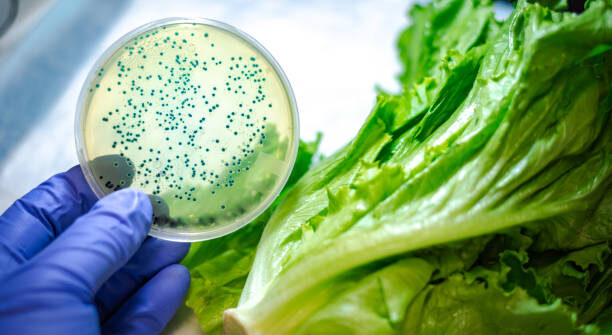Contaminants that endanger the wholesomeness of food are of different natures. These include macroscopic pollutants, which are visible; biological pollutants, such as parasites and microorganisms, which are not visible but may be present in food; and chemical contaminants, such as pesticides, heavy metals, or persistent organic compounds. When contaminated food is consumed, alterations are suffered, and a foodborne illness develops. At other times, exposure to contaminants can lead to long-term disorders and ailments in which it is often difficult to relate the symptoms to the source.
Chemical contaminants in food are often the result of environmental pollution. They reach them through the soil, air, or water. This fact is aggravated by pesticides, pharmacological substances, fertilizers, and other chemicals used in industry. Among the possible adverse effects on human health, the consequences on the brain during gestation and the first years of life stand out. The chemical pollutants of most concern are persistent organic pollutants. Due to their cumulative nature, both in the environment and in the food chain, they are concentrated in the food pyramid until they reach people. This is the case of methylmercury or PCBs (polychlorinated biphenyls), which accumulate in the marine environment and pass to fish, which humans then ingest. Other pollutants, such as heavy metals (aluminum, mercury, manganese, or lead), also have a neurotoxic effect on the body. Again, food is the main route of exposure. Although their use is currently regulated and many of them have been banned, it is impossible to eliminate their presence from the environment due to their persistence and low degradation.
Food safety and quality inspection are an integral part of national development plans. National food inspection systems are designed to protect the consumer’s health and welfare, promote the development of trade in food and food products, and protect the interests of the honest and fair food producer, processor, or trader from dishonest and unfair competition. Emphasis is placed on the prevention of biological and chemical hazards resulting from the
contamination, adulteration, or simply mishandling of food.
An essential part of a national food inspection system is contaminants testing services to detect and quantify food contaminants, such as chemical pesticide residues.
Sample handling techniques are also discussed, and many selected analytical methods are suggested for qualitatively or quantitatively isolating both chemical pesticides and industrial chemicals that contaminate food. The discussion of sample handling includes composition, preparation, extraction, purification, and separation techniques to analyze foods from various matrices. Analytical methods are appropriate for the determination and confirmation of residues in food. They are arranged so that they allow the decision of groups of similar residues in extensive multi-residue screening.
When analyses are done for control purposes, confirmatory tests must be carried out before an adverse report is issued in samples containing pesticide residues not generally associated with that commodity or cases where MRLs appear to have been exceeded.
By the way, if you are thinking of eating something that has mold in one corner and you think that by cutting that part, the rest will be fine, you should know that mold spores are everywhere and can develop under challenging conditions, where other microorganisms cannot reproduce: acid pH, refrigeration temperatures or low water activity. For this reason, we can find them in long-life foods that are not altered by the action of bacteria, such as jams, butter, tomato sauce, or nuts.
The problem is not in the visible part (the green or white spots that appear on the surface). Still, in the mycotoxins: toxic substances produced by fungi of the genera Aspergillus, Penicillium, and Fusarium and that can have acute gastrointestinal symptoms, as well as being considered carcinogenic (with the ability to cause cancer) in the long term. Mycotoxins are not visible and can penetrate the food, so we cannot know how much to remove. In addition, by removing the spoiled part, we may be dragging toxins and contaminating the features we will eat. That is why the whole food should be thrown away, regardless of its texture, hardness, or moisture.





